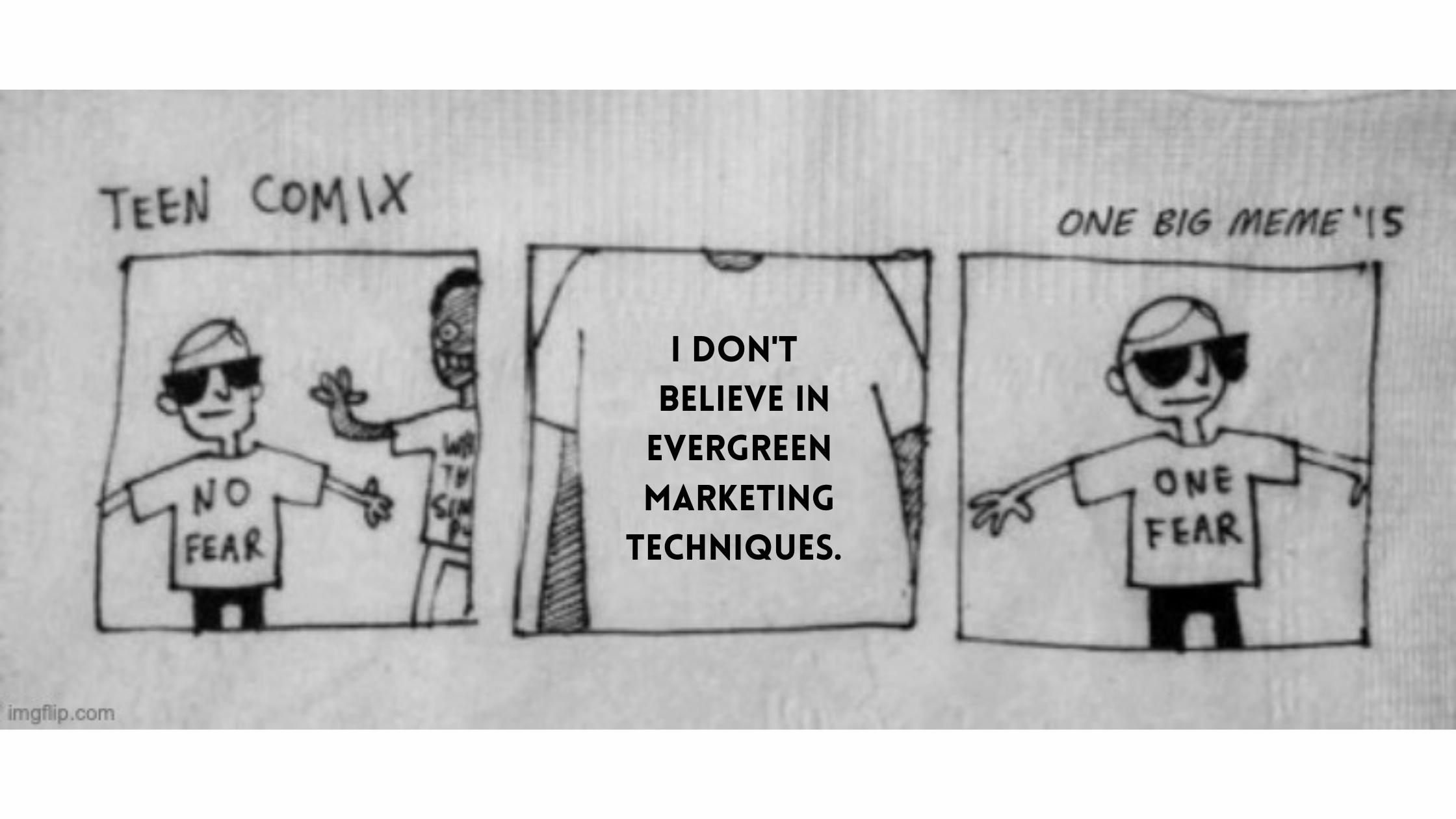Embracing 'meme-ification'
Would you believe me if I told you that Richard Dawkins, famous evolutionary biologist, gave us the ‘meme’ as we know it today?
The nomenclature of meme comes from the Greek mimema (meaning imitated), and Dawkins used it to refer to a unit of cultural information spread by imitation.
Imitation is the essence of meme culture. Figuring out which memes are marketable, however, is the key.
If you’ve gone through our social media course, you’ll have seen how memes can appear and just how much more ‘shareable’ they can make a message you’re trying to express.
(If not, I’d recommend heading over there now.)
A meme can present itself in any form, especially now there’s a fresh generation renovating the genre. It doesn’t even have to be funny or relatable.
Being up to date with why a meme is popular can help you steer clear of the uncanny valley a brand can fall into - putting out a collation of old memes that have passed their vintage is the best way to alienate yourself from a younger audience.
Take a look at these examples put together by The Washington Post (which were outdated before they left the drawing board).
Keeping some tabs on the trends (a simple Google search or Twitter trawl can be pretty informative) can not only inform a potential meme but what else you can be doing to engage with other netizens. Because the heart of the meme is replication, there’s some safety in seeing what’s popular at the moment and jumping on the bandwagon - though it might not flex your creative muscles.
Take TikTok, the home of Gen Z and a coterie of like-minded creators. As a generation who have grown up fed on the simpler memes of the internet’s early days, they’ve pushed the boundaries of the medium into the abstract.
Even having an account on the platform and scrolling through the content being uploaded, you can get a better idea of what memes are upcoming/ regularly referenced and the language being used.
Don’t worry, I’m not suggesting you upload a video of yourself dancing 'the renegade', but knowing what it is, i.e. familiarising yourself with what’s currently in the consciousness of popular culture, is a valuable experience!
After all, no one wants to hear ‘I can haz’ in 2020.
Being in touch with the thrumming vein of internet trends is helpful no matter what your target audience is, but knowing who you want to focalise on streamlines your social media presence.
One of the best examples of targeted meme marketing is the American fast-food brand Wendy’s. Using the power of memes, in 2017 they revitalised their online identity and saw a 49.7% growth in profit.
By not taking themselves too seriously, Wendy’s made a new connection with their younger audience. They share other creators on their official TikTok page and casually reply to users on their Twitter — proliferating the impression that they’re an approachable brand and gaining a 113% rise in Twitter mentions.
In an interview with the Entrepreneur, Wendy’s Chief Marketing Officer Kurt Kane revealed that this was because ‘The biggest thing [they] decided was to stop advertising to people and to start having a conversation’. This attitude has gained their brand a new legion of die-hard fans and a reputation as the sassy friend who ‘you want to go to lunch with’.
The importance of reducing the epistemic distance between brand and consumer has never been more important. In the not so distant future, Gen Z raises their rallying cry of ‘eat the rich’ (a meme now in its own right) and asks for more from brands than their products.
Understanding memes has become less about ‘being down with the kids’ and more of recognising that what a changing market wants to see.
Pro Tip: If you think you’re trying too hard, you probably are.






